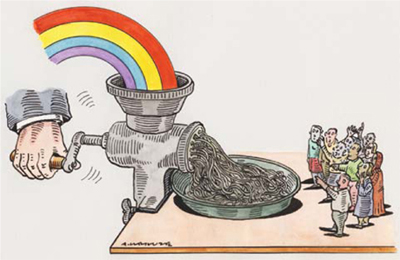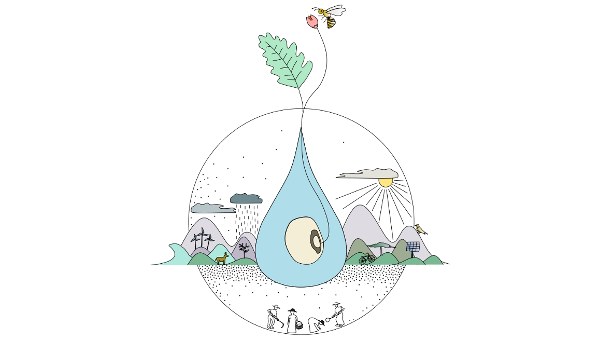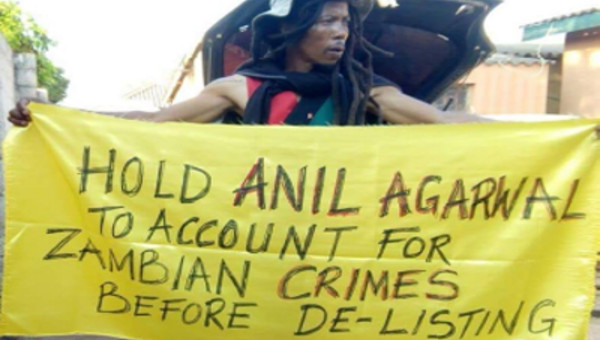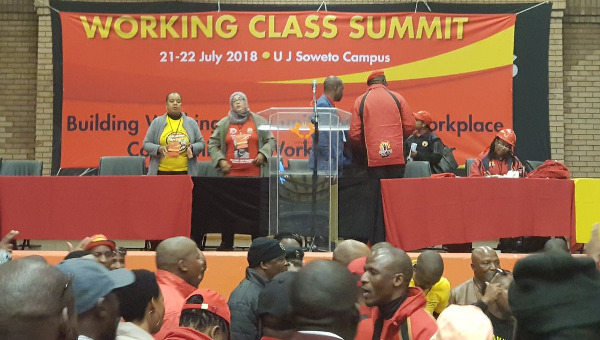Reclaiming the South African Dream
During the 20th century, South Africa’s national struggle occupied an iconic place in the global political imagination. International opposition to apartheid came together in the heady days of socialist revolutions, anti-colonial struggles and the rise of the 1968 new left. Despite this euphoric historical ferment, the global anti-apartheid movement furnished internationalism with a distinctive political thread. This was more than anti-colonial or anti-imperialist solidarity. The anti-apartheid movement was part of a heroic endeavour to isolate one of the most racist, unjust and offensive social systems in the world. It prefigured the new transnational activism that has come to the fore against neoliberal globalization, and it is a movement from which valuable lessons can be drawn for contemporary global struggles.

While the South African liberation struggle was exceptional, it was also implicated in the limits of a cycle of struggle sweeping through the third world after the Second World War. Socialist and national liberation vanguardist politics showed serious limitations once in power. By the 1990s, both Arab (Egypt and Libya) and black African (Angola and Mozambique, for example) attempts at socialism had been defeated on the continent. However, the authoritarian hold of such politics was still alive, now married with transnational neoliberalism. The collapse of the Soviet Union further strengthened this shift.
The Theft of the Dream
Post-apartheid South Africa had two choices in this context: to continue the struggle in the context of transition to realize historical aspirations and the non-racial South African dream, or to capitulate to the neoliberal onslaught. The latter option was far from inevitable, as some ‘realist’ critics would suggest. The space for the realization of more in South Africa existed and still exists despite the global conjuncture.
Underpinning the struggle for more in South Africa’s transition were four crucial factors.
First, there was the existence of the global anti-apartheid movement and a highly organized mass movement in the country under the banner of the United Democratic Front (UDF). The mass movement led by the UDF, while facing its own challenges, was steeped in a grass-roots activist tradition of ‘people’s power.’ This was very different from the centralized control structures of the exiled African National Congress (ANC) and the South African Communist Party (SACP).
It was this tradition of people’s power, expressed through associational and participatory democracy, that mobilized thousands of South Africans onto the streets in 1989 in nonviolent and open opposition to the banning of the mass movement. This paralleled what was going on in eastern Europe. Unfortunately, with the unbanning of the ANC and SACP, the UDF was immediately disbanded without any serious strategic deliberation.
Second, there was the defeat of the South African Defence Force in Angola due to the presence of Cuban armed forces, and the realization of the ruling elite that its existence could only be secured through surrendering power to the previously oppressed majority. While the regime could still resort to low intensity violence inside South Africa – and this took its toll, particularly with the assassination of Chris Hani, the SACP general secretary – these were the last kicks of a dying horse.
Third, there was a growing wave of resistance to neoliberalization in Africa and a genuine belief that South Africa’s liberation struggle would strengthen the radical impulse for change. This wave of resistance was part of the emergence of a new cycle of struggle, a counter-movement to neoliberal capitalism, punctuated by Chiapas (1994), Seattle (1999) and more generally the ‘red tide’ in Latin America, and now the ‘Arab spring’ and mass protest movements in Spain, Greece and elsewhere. South Africa’s liberation struggle and democratic breakthrough in 1994 could have been a key moment in this upswing of resistance.
Fourth, the structural crisis and stagnation of a monopolized apartheid capitalism necessitated a process of economic restructuring that provided an opportunity for reconstruction and development on the terms of the oppressed majority rather than capital. Ironically, even the World Bank in the early 1990s in its interventions on South African macro-economic policy accepted the need for a redistributive approach, given the historical legacies of racialized deprivation and exclusion.
Despite this, the ANC-led liberation movement chose not just reconciliation (which is what most South Africans wanted) but appeasement. This meant that white monopoly capital was not called upon to take responsibility for its complicity under apartheid and to commit to a serious transformative program, even though the conditions existed for this. Instead it was given what it wanted in terms of neoliberal reforms and ‘economic stability.’ Corporate social responsibility, tax payments and black economic empowerment to engender a new black bourgeoisie were considered sufficient and a normalising quid pro quo. Even this strategy has not worked with many monopoly firms moving offshore.
Instead of pursuing the dream of a transformed and non-racial South Africa, the ANC-led national liberation movement relied on neoliberal reforms with an African voice to bring a ‘better life for all.’ The presumption was that South Africa would manage home-grown neoliberalization as a short term expedient in a different way from the rest of Africa and, indeed, the world. Thus, post-apartheid South Africa moved in a straight historical line from apartheid into a market-led development model, sometimes referred to as ‘Afro-neoliberalism.’
Seventeen years later, a virtue has been made out of necessity. The great globalization leap of national liberation has been a great leap into dystopia. The deepening of the South African economy’s immersion into global financial, production and trade structures through macro-economic adjustment has produced a country with one of the highest unemployment rates in the world (40 per cent), obscene inequality (and worsening in comparison with, for example, Brazil), a deepening ecological crisis (South Africa is the 13th-highest carbon emitter in the world and scary climate change scenarios face the country) and growing hunger. This is the short story of how the South African dream was stolen from the majority.
The Neoliberal Squeeze on Post-Apartheid Democracy
Since 1994 the Afro-neoliberal project not only de-racialized and globalized South Africa’s monopoly-driven accumulation model, but it has also repositioned South Africa within the inter-state system, particularly within a U.S.-led bloc. In doing so, it has engendered technocratic and, in some instances, authoritarian state practice toward state-civil society relations. This has produced a neoliberal squeeze on democracy.
This squeeze is taking place in the everyday workings of South African democracy through the disembedding and de-territorialization of the market. The market has become our present and our future. It has been propagated in our public sphere and its values – greed, possessive individualism and competition – are being naturalised in everyday life. There is supposedly no alternative despite the deepening economic crisis.
With the advent of the global recession, South Africa lost close to one million jobs in the context of already huge unemployment. In the midst of all this, the South African Competition Commission has given permission to U.S. retail giant Walmart to buy out one of South Africa’s leading monopoly retailers. While trade unions are protesting against the likely downward push on wages, the threat of greater unemployment and de-industrialization, the ANC government has welcomed this market inflow. This trap of the market master narrative is profoundly undemocratic because it does not authorize other ways of thinking about South Africa’s challenges and solutions.
There has also been a narrowing of the boundaries of democracy and the meaning of citizenship. The dream of a people’s democracy has been shrunk from the triad of strong representative, associational and participatory democracy to a form of weak representational democracy. Our politicians have become technocrats: they manage ‘market democracy’ such that the juggernaut of accumulation is not constrained and growth is realized at all costs. The risk to capital is managed best by a shallow democracy.
South Africa’s four national elections since 1994 have been held up as exemplars of ‘free and fair’ electoral contests with voter turnouts adequate to legitimate the formal meaning of citizenship: I am a voter. Actually, in this context we are not citizens but still subjects of capital.
A globalized South African state has reduced democratic space. This has happened through locking the country into a global power structure serving and reproducing the rule of transnational capital. The WTO, IMF, World Bank, G20, World Economic Forum, and the UN are all crucial transnational policy-making forums. These institutions are not there to serve global citizenship but to ensure that global capitalism thrives.
South Africa is a key player in all these institutions. Through its participation in this global power structure it transmits a global consensus on what capital wants back into the domestic context. A weak representative democracy is no more than a transmission belt for this consensus, which trumps the desire for more by South Africa’s workers and poor majority and makes a mockery of narrow electoral democracy.
The Practice of South Africa’s Authoritarian National Liberation Left
For many people worldwide, the ANC, the party of Nelson Mandela, represents a democratizing force. In the context of the national liberation struggle this might have been true, partly because there were great leaders at the fore, like Mandela, who believed in a democratic South Africa and partly because the antagonist, the apartheid regime, was so repulsive that the world assumed that the national liberation movement was morally and politically superior. It was a harbinger of bourgeois republican values or 20th-century socialism, according to taste, and this was the identity presented to the world through the ANC’s programmatic pronouncements. Today the ANC-led liberation movement looks like a left that has lost its way.
Many great 20th-century left movements went through this experience, including the Bolshevik party in Russia (which became Stalinized), the social democratic parties (which became cold war pawns) and more recently ‘third way’ market democracy advocates and liberation movements such as Congress in India (which degenerated into criminalized politics within a decade of its rise to power). While it wasn’t inevitable that the ANC-led liberation movement would end up in the same place, it has. This is due to some extent to the historical contingencies it has had to navigate and in large measure because of the strategic choices it has made – in particular its choice not to struggle for more but to capitulate to neoliberalization.
The ANC-led alliance is made up of three core components: the ANC, the SACP and the Congress of South African Trade Unions (COSATU). This is a configuration that corresponds to the ideological template of revolutionary nationalism, Soviet socialism and social democracy. There is overlapping membership but a strict division of political labour. The ANC ensures hegemonic rule, the SACP is the thinker and conscience and COSATU the bastion of independent worker power. By choosing to facilitate the restructuring of South African capitalism on the terms of capital it has ended up becoming an authoritarian force.
The ANC today has evolved from a broad liberation movement to an electoral machine. The emergence of a new generation of black economically empowered (BEE) politicians has firmly embedded the ANC in patronage politics, state-led class formation and widespread corruption. South Africa’s high profile corruption scandals, from the ‘arms deal’ saga and oil deals with Iraq, to the latest ‘lease scam’ involving South Africa’s suspended police commissioner, involve large sums of money – and in most instances the evidence trail leads straight back to the ANC, including its top leadership.
In this context various attempts have been made to undermine the independence of the media, the criminal justice system and more recently South Africa’s constitutional court. This has been accompanied by a generational shift from the moral authority of Mandela to the authoritarian populism of Julius Malema, the ANC Youth League president. Malema is prone to bellicose war talk and racist and sexist rhetoric, and is part of an extremely ambitious layer of youth leaders willing to manipulate mass aspirations for intra-ANC battles.
The ANC today is a battleground of factional interests. The gap between leaders and led is widened by ANC elite practice. Its moral deficits and its shift away from a people-centred strategic project undermine its claims to hegemonic leadership. Electoral wins are increasingly about an electorate focused on the allure of enrichment through ANC patronage rather than transformative change.
Meanwhile, the SACP has recoiled into the certainties of a Sovietized Marxism-Leninism. Today it operates as a client of the Chinese Communist Party – receiving financial support, sending its top leadership to political schools in China, hosting numerous high-ranking Chinese delegations in South Africa and screeching the loudest against visits by the Dalai Lama. Also deeply divided, the SACP has consistently purged independent-minded activists and those who question its direction. In essence, the pull of overlapping membership has reduced the SACP into a faction inside the ANC, rather than a mass party of the working-class.
COSATU is in an extremely difficult place, plagued by serious dilemmas. As the most organized labour federation and social movement in Africa, with two million members, it is the source of important structural, associative and symbolic power. However, its influence has been undercut by the neoliberal restructuring of the economy. South Africa’s high and growing structural unemployment has not only thinned out union presence in key sectors of the economy but has also reduced union densities, membership dues and has created a social distance between the employed and the unemployed.
At the same time, as the winds of global competition have delivered serious blows to COSATU, placing it on the defensive, it has been pulled into internal ANC battles. Many of its leaders have been seduced by the desire to rise into government positions through the ANC, while union investment companies have also taken unions into shady deals. Most recently, the South African Clothing and Textile Workers Union (SACTWU) lost millions of rands of workers’ money in a dubious empowerment scheme involving an ANC deputy cabinet minister. This is just the tip of the proverbial iceberg.
The loss of worker control in COSATU, increasing bureaucratization and a sense of being politically compromised in the ruling tripartite alliance has widened the gap between rank-and-file workers and trade union leaders. This makes workers reticent to vote for an ANC government that they know is not representing their interests.
The Counter-Movement of Resistance and Hope
The underbelly of contemporary South Africa is a place of fractured hope, desperation, uncertainty and alienation. It is a place in which apartheid patterns of exclusion and degradation spawn shack settlements, where hunger stalks as the link between wage earning and social reproduction has been broken, and where basic needs such as healthcare, education and clean drinking water are an uphill battle.
People are responding. South Africa experiences one of the highest rates of civic protest action in the world. On a daily basis hundreds of communities take to the streets against the ANC state, often in violent protests, to demand service delivery, jobs, housing and an affirmation of rights. Some commentators suggest that these violent outbursts are the ‘rebellion of the poor.’ But while these flashpoints are important, they are episodic, fragmented and loosely organized. The violence is sometimes linked to vicious power struggles (within the ANC in some instances) and sometimes about recognition of voice and affirmation of citizenship.
More generally these struggles are understood as an expression of the crisis of the national liberation project. At one level this is about the unravelling of the ANC-led alliance and deep disaffection running through the grassroots. At another level it is about a deepening crisis as a South Africa locked into neoliberal globalization faces the knock-on effects of the global economic crisis. It is in response to this that a new democratic left activism has emerged in contemporary South Africa. Such an activism provides a pole of attraction for a host of anti-capitalist left forces seeking to reclaim lost ground.
In 2008, disaffected members of the SACP, independent anti-capitalist social movements and left activists began a conversation about the crisis of the national liberation project and the need for a new way forward. While there is a common appreciation among these forces about what is going wrong in South Africa, there is a much more self-aware, experimental and non-dogmatic approach on how to proceed. The people who came together spent three years having conversations, holding workshops and most importantly being actively involved in struggles against xenophobia and violence against gay and lesbian people, supporting workers’ wage demands and community struggles for improved services, and working closely with women’s movements, mainly in rural communities.
In January 2011, the first Democratic Left conference was held. It resolved to push the boundaries and horizons of anti-capitalist left politics by avoiding the ready-made answers of 20th-century left orthodoxy and mainstream liberal conceptions of narrow electoral politics. Activists involved in the process recognize it is a journey to clarify and develop a post-national liberation and post-neoliberal left political alternative while being immersed in grass-roots struggle.
Three crucial practices are shaping this organic activist current from below. First, emphasis on developing a bottom-up democratic practice in which capacity for autonomous action is built among grass-roots movements and communities. This includes, for instance, supporting South Africa’s first factory occupation, which began in October 2010, involving 110 workers at Mine-Line Engineering, an insolvent engineering factory that a workers’ cooperative is attempting to rebuild. It is about renewing grass-roots democracy as a weapon against capitalism. The solidarities emerging in these struggles express unity as an anti-capitalist front, but one that values plurality.
Second, Democratic Left practices are about advancing transformative alternatives from below. Such alternatives include integrated public transport, ecologically designed and affordable housing, climate jobs, food sovereignty and the solidarity economy.
Finally, Democratic Left practice is about reclaiming a vision of hope and dignity for South Africa. It is about a people-driven vision, which recognizes that human beings, not just in South Africa but the world over, desire something different and hope for more. Such acts of collective imagining exist outside capitalism and are acts of resistance. The Democratic Left intends to reclaim the South African dream by listening to the people. •
This article first published by Red Pepper.





